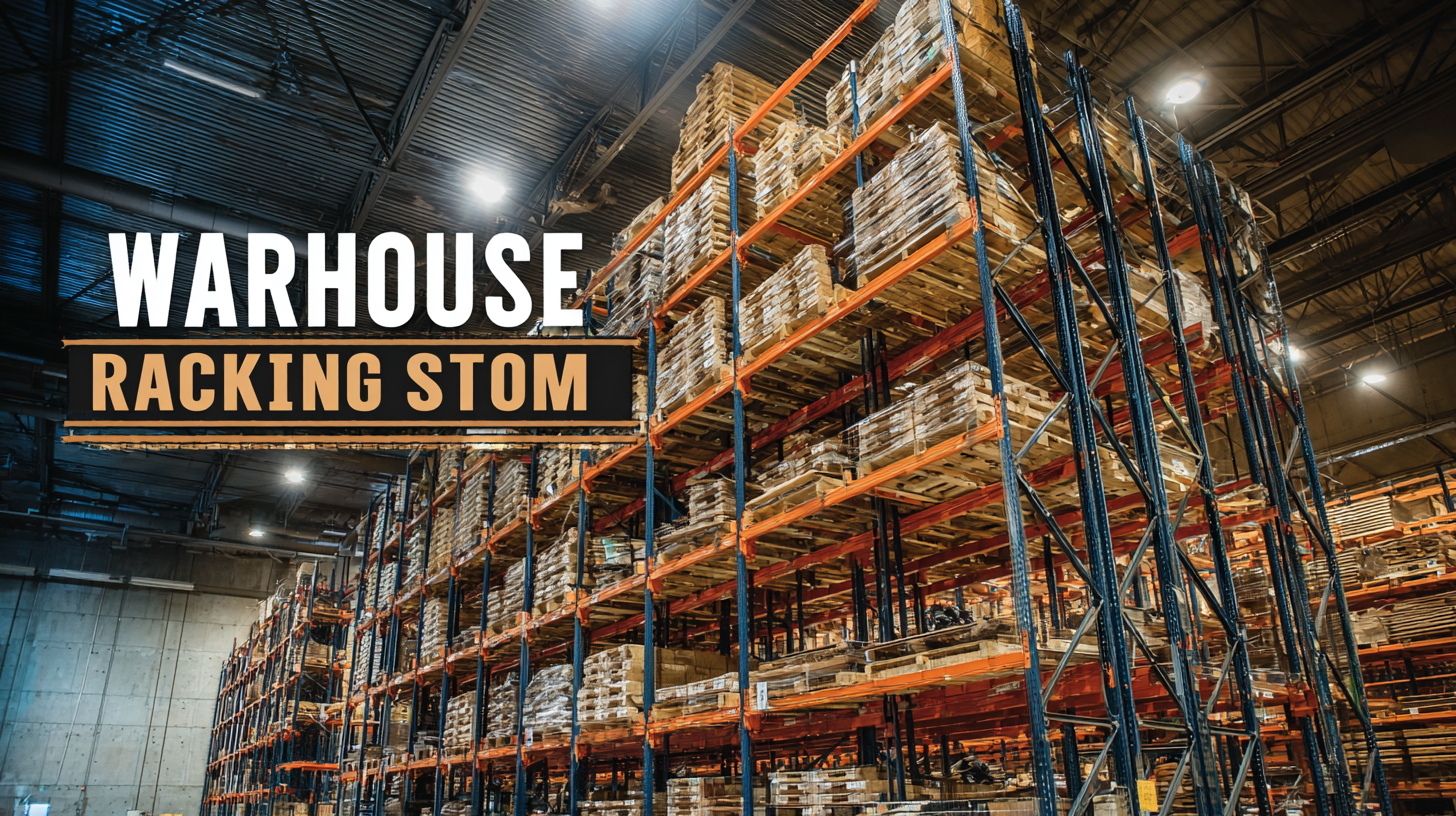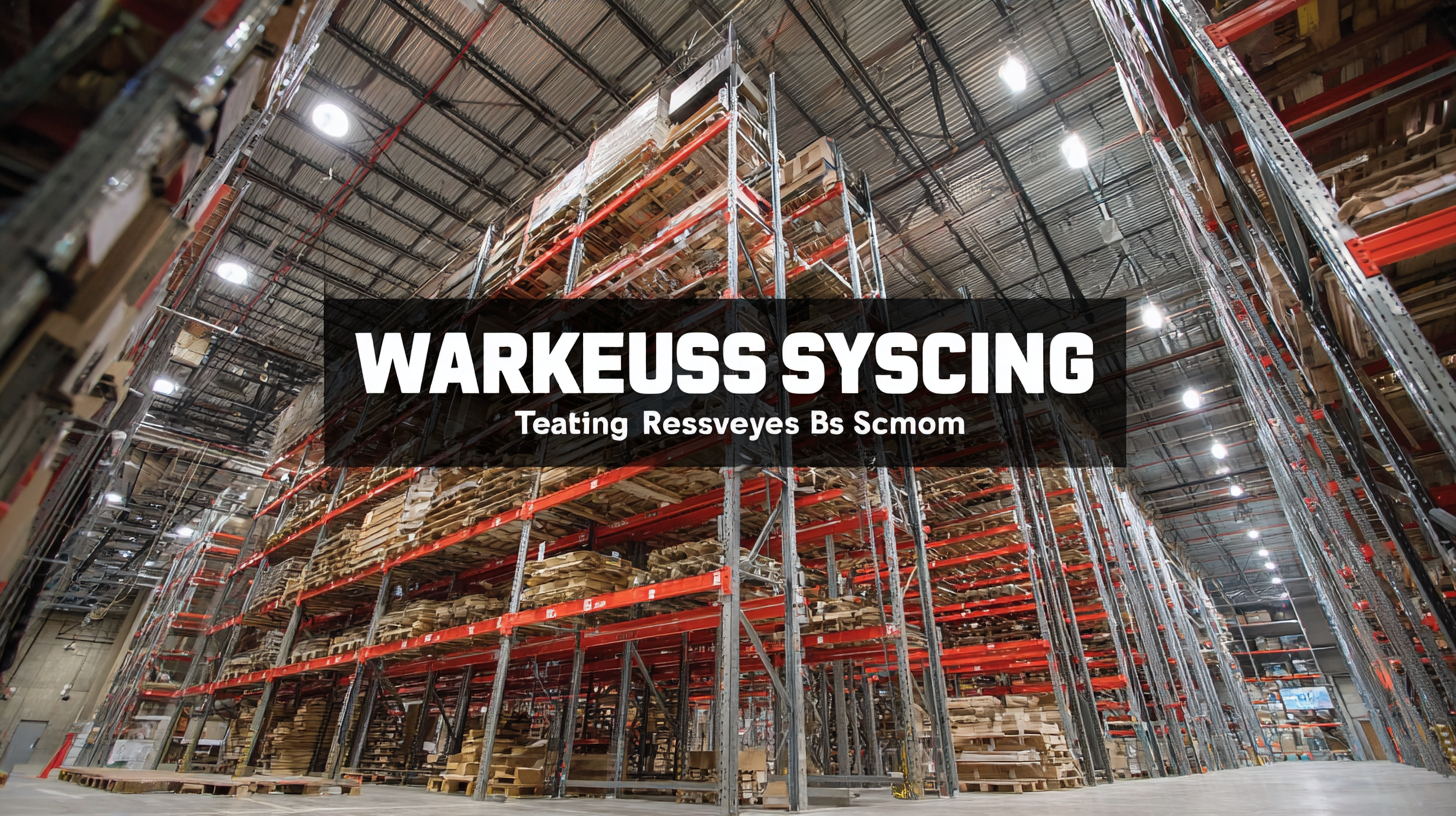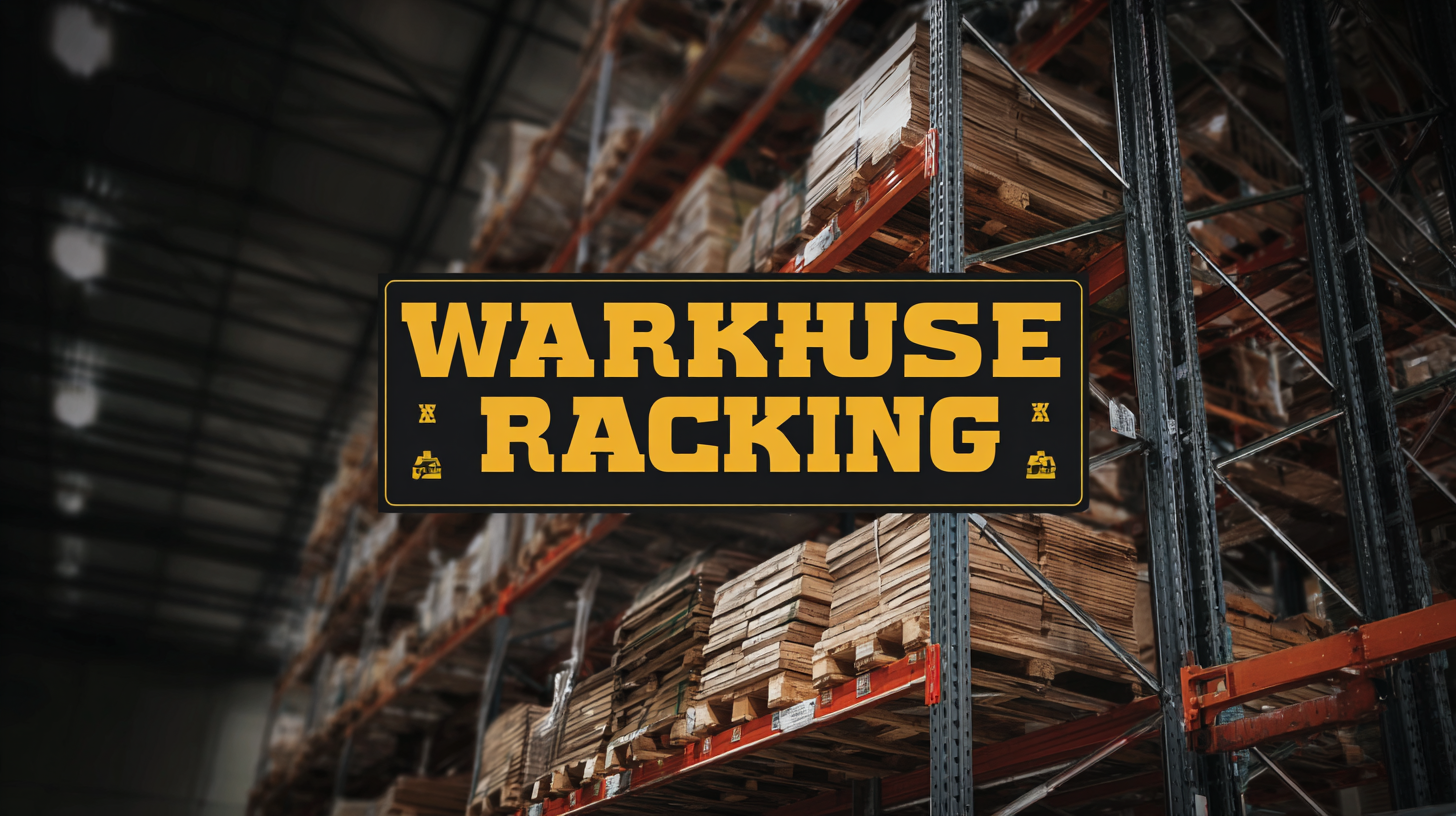2025 Trends in Warehouse Racking Systems: The Ultimate Guide to Optimizing Efficiency and Space Utilization
In the fast-evolving landscape of logistics and supply chain management, the significance of Warehouse Racking Systems has never been more pronounced. As businesses strive to maximize efficiency and space utilization, reports from leading industry analysts, such as the Global Warehouse Racking System Market report, highlight an expected annual growth rate of 8.5% from 2021 to 2027. This growth underscores the critical need for innovative racking solutions that not only enhance storage capacity but also streamline operations. In 2025, the trends influencing Warehouse Racking Systems will be pivotal, driven by advancements in technology and changing consumer demands. This ultimate guide aims to explore these emerging trends, offering actionable insights for businesses to optimize their warehouse operations in an increasingly competitive environment.

Emerging Technologies Reshaping Warehouse Racking Systems in 2025
The warehouse industry is on the brink of transformation in 2025, largely driven by emerging technologies that enhance racking systems. Innovations such as automated guided vehicles (AGVs) and robotics have started reshaping how goods are stored and retrieved, improving efficiency and reducing labor costs. According to a report by Mordor Intelligence, the global warehouse automation market is projected to reach $30 billion by 2025, indicating a substantial shift towards more mechanized operations.
In addition to robotics, advanced software solutions, such as warehouse management systems (WMS) integrated with artificial intelligence (AI), are playing a pivotal role in optimizing space utilization. With AI algorithms predicting stock levels and helping in dynamic slotting, these systems can increase storage density by as much as 30%. A study from Logistics Management found that implementing AI in warehouse racking can improve order picking speeds by 25% and reduce mispick rates significantly, demonstrating the tangible benefits of these technologies in enhancing operational efficiency. This technological evolution will not only streamline processes but also support scalability in an ever-growing e-commerce market.
Top Strategies for Maximizing Space Utilization in Modern Warehouses
In modern warehouses, maximizing space utilization is vital for efficiency and profitability. One of the top strategies is to adopt innovative racking systems that optimize vertical space and facilitate easy access to goods. By incorporating adjustable shelving and modular racking units, warehouses can efficiently utilize every inch of space, accommodating varying inventory sizes without permanent alterations. Similar to co-living spaces that maximize limited square footage through thoughtful design, warehouse layouts can benefit from creative racking configurations that promote both organization and accessibility.
Furthermore, automation plays a crucial role in enhancing space utilization. Automated storage and retrieval systems not only streamline operations but also reduce the footprint required for traditional shelving. By integrating robotics and AI-driven inventory management, warehouses can increase their density and ensure faster order fulfillment. This combination of tactical design and advanced technology paves the way for modern warehouses to navigate spatial constraints while improving overall operational efficiency. Embracing these strategies will ultimately lead to a more organized, productive, and profitable warehousing environment.
How Automation is Revolutionizing Warehouse Racking Efficiency
The evolution of warehouse racking systems is being significantly influenced by automation technologies, which are redefining efficiency and space utilization strategies. Automated storage and retrieval systems (AS/RS) are at the forefront of this transformation, allowing for faster inventory management and streamlined operations. These systems not only minimize human error but also optimize the use of vertical space, providing warehouses with a more compact and organized layout. As a result, businesses can maximize their storage capacity while improving accessibility and reducing retrieval times.

Moreover, the integration of advanced technologies such as robotics and artificial intelligence is revolutionizing how goods are handled within these spaces. Automated guided vehicles (AGVs) and robotic arms are increasingly being deployed to maneuver through aisles and pick products, enhancing productivity by operating around the clock. This heightened efficiency not only leads to lower labor costs but also enables businesses to respond swiftly to changing consumer demands. In 2025, as automation continues to develop, the adaptability of warehouse racking systems will be crucial for businesses striving to maintain a competitive edge in a rapidly evolving market.
The Role of Data Analytics in Optimizing Warehouse Layouts
In the evolving landscape of warehouse management, data analytics is reshaping how businesses optimize their layouts to enhance efficiency and space utilization. According to a 2023 report by the Warehousing Education and Research Council (WERC), warehouses leveraging advanced data analytics can boost operational efficiency by up to 30%. This is achieved by employing sophisticated algorithms to analyze inventory levels, order patterns, and storage capabilities, allowing for a more strategic arrangement of racking systems.

Moreover, integrating Internet of Things (IoT) technology into warehouse operations amplifies the role of data analytics. A study by McKinsey & Company indicates that companies utilizing IoT in their warehousing processes have seen a 20% reduction in operational costs. By continuously gathering real-time data on space usage and inventory flow, businesses can adjust their layouts proactively, ensuring maximum capacity and minimal congestion. In 2025, as the demand for faster deliveries increases, data-driven layouts will not only enhance efficiency but also empower warehouses to adapt swiftly to dynamic market conditions.
Sustainable Practices in Warehouse Racking Systems for Eco-Friendly Operations
In the pursuit of sustainable operations, warehouse racking systems are evolving to incorporate eco-friendly practices that prioritize efficiency while minimizing environmental impact. One of the key trends is the use of sustainable materials in racking design. Manufacturers are increasingly utilizing recycled steel and other eco-friendly materials, which not only reduces waste but also enhances the structural integrity of the racks. These materials provide durability and longevity, ensuring that the racking systems meet operational demands while staying aligned with environmental standards.
Another significant trend is the integration of smart technology in warehouse racking systems. By incorporating IoT devices, warehouses can monitor and optimize their space utilization in real-time, thereby reducing energy consumption and improving overall efficiency. This technology can track inventory levels and help in implementing just-in-time storage solutions, which minimize excess inventory and decrease the need for additional racking space. As a result, warehouses can operate more sustainably by reducing their carbon footprint while still maximizing storage capabilities. These innovations indicate a promising shift towards greener practices in the logistics and supply chain industry.
2025 Trends in Warehouse Racking Systems
| Trend | Description | Sustainability Impact | Efficiency Improvement |
|---|---|---|---|
| Automated Racking Systems | Integration of robotics and AI for stock management. | Reduces waste through precision and less human error. | Increases retrieval speed and accuracy, optimizing floor space. |
| Mobile Racking Systems | Racks on wheels that can be moved to create more space. | Maximizes space utilization, reducing the need for additional buildings. | Enables better access to products, improving overall workflow. |
| Sustainable Materials | Use of recycled and eco-friendly materials for racking systems. | Lowers carbon footprint in warehouse operations. | Durability and low maintenance lead to long-term cost savings. |
| Vertical Racking Solutions | Utilizing vertical space to maximize storage capability. | Reduces land usage and allows for more efficient use of resources. | Improves storage density and minimizes floor space required. |
| Energy-Efficient Lighting | Using LED lighting and automated systems to reduce energy consumption. | Decreases electricity costs and overall environmental impact. | Enhances visibility, increasing worker productivity and safety. |

